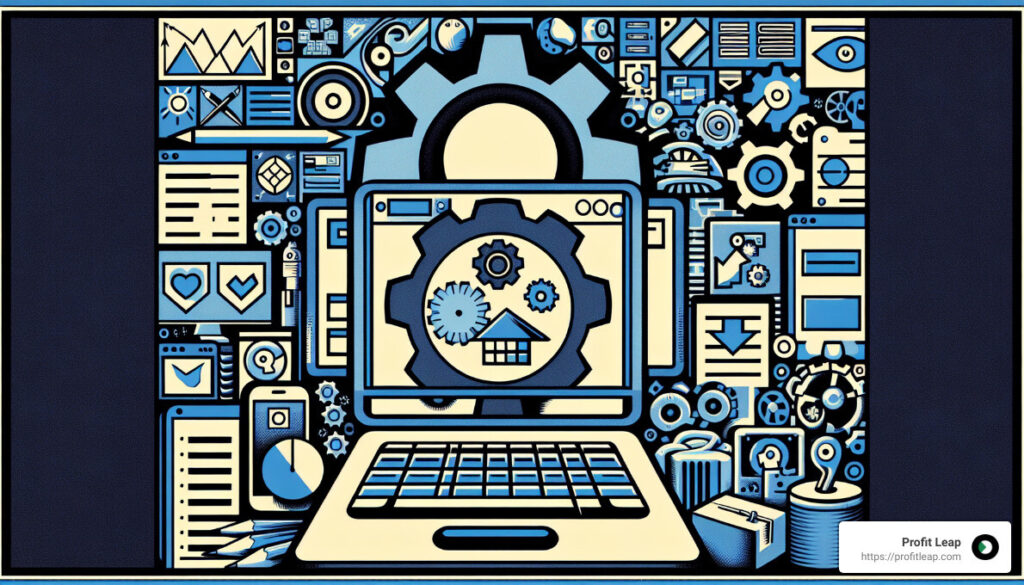Unlocking Success: The Crucial Role of Employee Benefit Packages
Benefit packages are not merely perks; they are strategic tools that businesses can utilize to gain a competitive edge in the marketplace. Here’s why they are so important:
ATTRACTING AND RETAINING TOP TALENT
In today’s competitive job market, skilled professionals have the luxury of choice. A comprehensive benefits package can be the deciding factor for a candidate when choosing between job offers. Benefits such as health insurance, retirement plans, and paid time off are often expected, but additional perks like flexible working hours, wellness programs, and professional development opportunities can distinguish a company from its competitors. By offering a strategic benefits package, businesses can attract top candidates and reduce turnover, saving on recruiting and training costs.
BOOSTING EMPLOYEE MORALE
Employees who feel valued are more likely to be engaged and satisfied with their jobs. Benefit packages that cater to diverse needs, such as childcare support or mental health services, demonstrate that a company values its workforce beyond their immediate job functions. This can lead to increased loyalty and a willingness to go above and beyond in their roles, which is invaluable for the growth and success of any business
ENHANCING PRODUCTIVITY
When employees are healthy, both physically and mentally, they are more productive. Benefit packages that include health and wellness programs can result in fewer sick days, reduced healthcare costs, and a more energetic and focused workforce. Additionally, benefits such as flexible work schedules can reduce stress and burnout, leading to a more sustainable and productive work environment.
CREATING A POSITIVE COMPANY CULTURE
The benefits a company offers reflect its values and culture. A company that invests in comprehensive benefit packages is likely to cultivate a culture of support and well-being. This can enhance the company’s reputation not only among potential recruits but also within the industry and customer base. A positive company culture can serve as a powerful branding tool, leading to positive reviews and word-of-mouth referrals.
IMPROVING THE OVERALL EMPLOYEE EXPERIENCE
The benefits employees receive greatly influence their overall experience at a company. A carefully designed benefits package can enhance employees’ quality of life, offer security, and demonstrate the company’s commitment to their long-term well-being. This comprehensive approach to employee satisfaction can result in a more harmonious workplace and a stronger, more committed team.
Crafting Attractive Employee Benefit Packages
UNDERSTANDING EMPLOYEE NEEDS
Before designing a benefits package, it’s crucial to understand the varied needs of your employees. Conducting surveys, one-on-one interviews, and group discussions can help gather valuable insights into what your employees value most. This understanding will serve as the basis for designing a benefits package that not only attracts talent but also fosters loyalty and satisfaction.
HEALTH INSURANCE OPTIONS
Health insurance is often considered the foundation of any benefits package. Offering a range of options, from HMOs to PPOs, allows employees to select the plan that best fits their needs. Consider including dental and vision coverage as well. To make health insurance more affordable, explore options such as Health Savings Accounts (HSAs) or Flexible Spending Accounts (FSAs), which offer tax advantages for both employers and employees.
RETIREMENT PLAN CONTRIBUTIONS
A robust retirement plan is crucial for long-term employee retention. Whether it’s a 401(k), 403(b), or another type of retirement plan, providing employer contributions or matching can greatly increase the perceived value of the benefit. Educating employees about the importance of saving for retirement and how to maximize their contributions can also be a valuable component of your benefits package.
PAID TIME OFF POLICIES
Paid time off (PTO) is essential for achieving work-life balance. A well-structured PTO policy should include vacation days, sick leave, and personal days. Some companies now offer unlimited PTO, which can be a major draw for new talent. However, it’s important to ensure such policies are not abused and that work still gets done.
FLEXIBLE WORKING ARRANGEMENTS
Flexible working hours, remote work options, and telecommuting are gaining popularity. These arrangements can enhance employee satisfaction and productivity. When implementing flexible work policies, clear communication and guidelines are essential for maintaining accountability and performance.
ADDITIONAL PERKS AND BENEFITS
Consider offering additional perks such as gym memberships, childcare assistance, tuition reimbursement, or commuter benefits. These programs can be customized to meet the specific needs of your workforce and can distinguish your company from competitors.
STAYING CURRENT WITH TRENDS
The world of employee benefits is constantly evolving. Stay informed about the latest trends, such as student loan assistance or mental health support, and be willing to adapt your benefits package accordingly. This demonstrates to employees that you are committed to their well-being and responsive to changing needs.
CUSTOMIZATION AND FLEXIBILITY
No single benefits package will suit every employee. Providing a level of customization can empower employees to select the benefits most relevant to them. This could be achieved through a benefits allowance or a cafeteria-style plan, allowing employees to select from a range of options.
COMMUNICATION IS KEY
Once you have designed your benefits package, effective communication is vital. Ensure that employees have a comprehensive understanding of the benefits available to them and know how to effectively utilize them. Regular informational sessions, clear written materials, and accessible human resources support can assist in this matter.

Rolling Out Benefits: Communication and Legal Essentials
IMPLEMENTING BENEFIT PACKAGES
When implementing benefit packages, it is crucial to have a structured plan. Start by establishing a clear timeline for the rollout process. Ensure that all logistical aspects are in place, including enrollment forms, online portals, and informational brochures. Collaborate with your HR department or benefits provider to streamline the implementation process. Provide training for your HR team on the new benefits so they can effectively address any questions employees might have.
LEGAL ASPECTS OF BENEFIT PACKAGES
Ensure your benefit packages comply with all relevant laws and regulations. This includes federal laws, such as the Affordable Care Act (ACA) and the Employee Retirement Income Security Act (ERISA), as well as any state-specific mandates. Consult with a legal expert to ensure your benefits package is fully compliant and to understand the legal implications of any changes you make. Maintain detailed records of all benefit offerings and ensure your employees’ rights are protected.
REGULAR REVIEWS AND UPDATES
The job market and legal landscape are constantly changing, and your benefits packages should adapt accordingly. Schedule regular reviews of your benefits offerings to ensure they remain competitive and meet the needs of your employees. Solicit feedback from your team to understand the benefits they value most and identify any existing gaps. Be prepared to make adjustments to your packages and communicate any changes promptly and clearly to your employees.
Takeaways and Action Items
To remain competitive, businesses must look beyond traditional benefit packages and incorporate strategic services like AI business advisors, bookkeeping in Miami, business process consulting, and executive assistant services. This comprehensive approach to employee satisfaction and business efficiency not only attracts top talent but also seamlessly fosters a culture of innovation and growth
By strategically integrating these services into their offerings, companies can ensure they are well-positioned to attract, retain, and nurture top talent, ensuring long-term success in the evolving business landscape.
| ✳️ Design the Survey ✳️ Ensure Anonymity and Communicate the Purpose ✳️ Distribute the Survey and Collect Responses ✳️ Analyze the Data and Take Action | |
| ✳️ Assess Operational Feasibility and Needs ✳️ Develop a Clear Flexible Working Policy ✳️ Communicate and Train ✳️ Implement, Monitor, and Adjust | |
| ✳️ Evaluate Current Health Insurance Offerings ✳️ Gather Employee Feedback ✳️ Research and Explore New Options ✳️ Implement Changes and Communicate Effectively | |
| ✳️ Conduct a Needs Assessment ✳️ Design the Customizable Benefits Package ✳️ Develop Clear Communication Strategies ✳️ Implement and Provide Ongoing Support | |
| ✳️Schedule Regular Benefits Reviews ✳️ Gather Data and Feedback ✳️ Review and Update the Benefits Package ✳️ Communicate Changes and Implement Updates |
FAQ
Get your FREE 8 Gears Assessment Score in 10 minutes!



